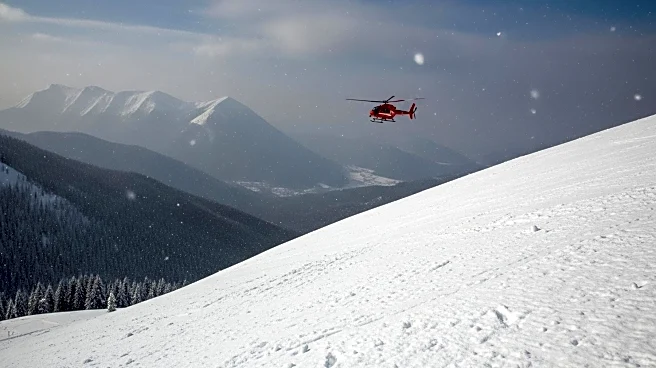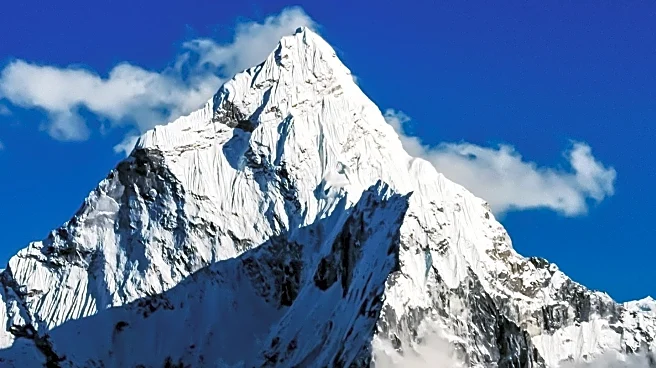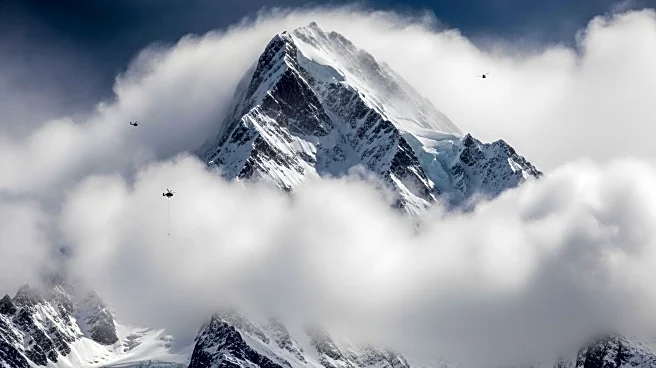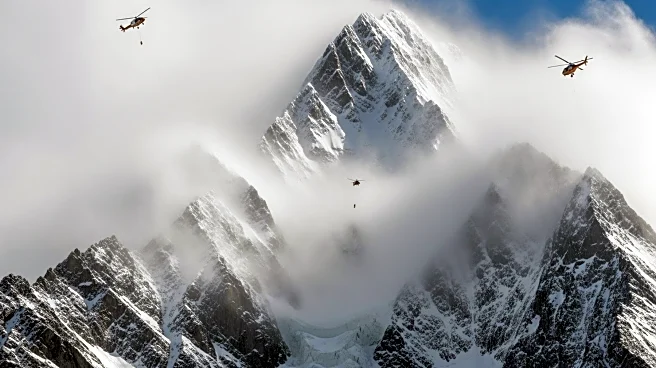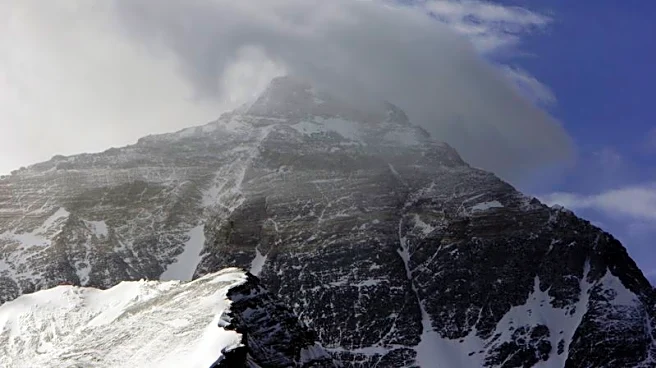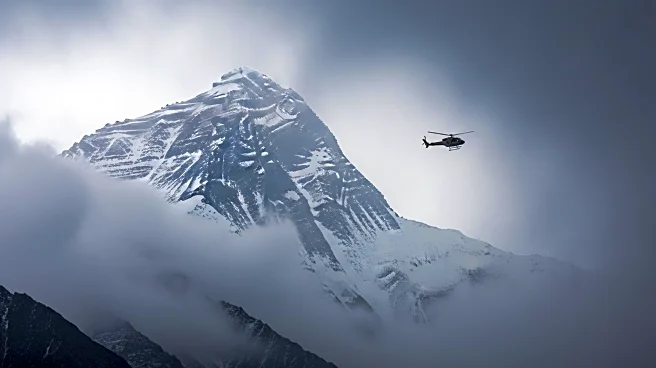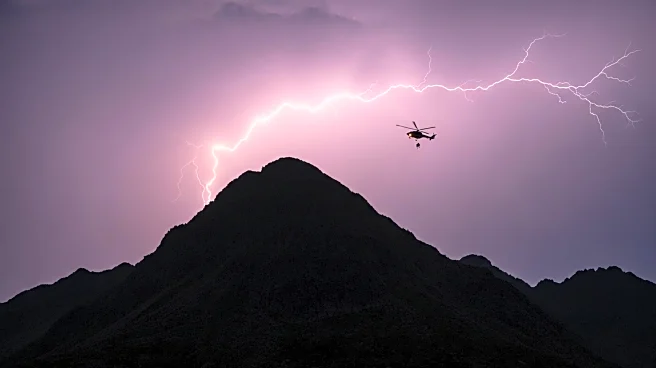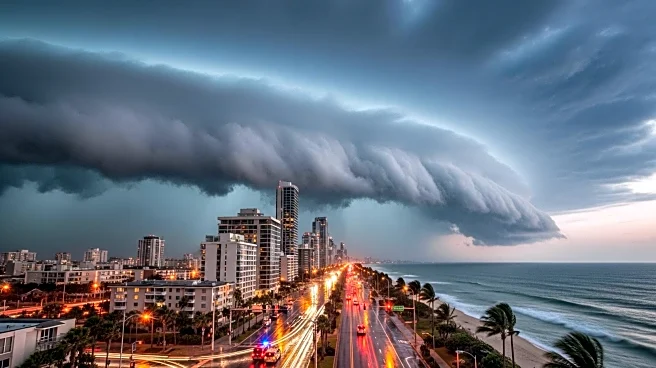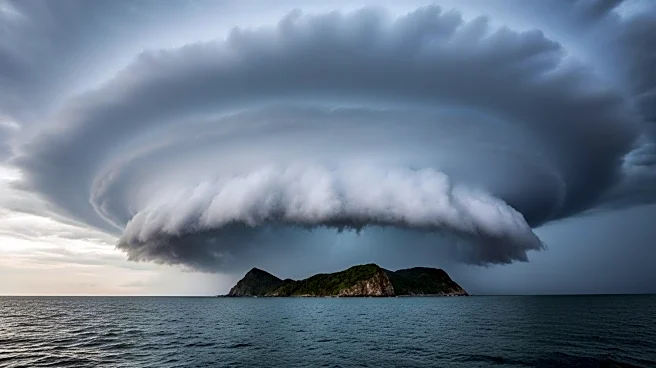What's Happening?
Rescue operations are in progress on Mount Everest following a severe snowstorm that trapped nearly 1,000 people on the mountain's eastern side. According to Chinese state media, hundreds of trekkers were stranded by a blizzard in Tibet but have been guided to safety by rescuers. As of Sunday, 350 individuals reached the township of Qudang, while contact has been established with over 200 others. The snowstorm, which began on Friday, brought heavy precipitation and cold temperatures, posing a risk of hypothermia. Local villagers and rescue teams have been deployed to clear snow and assist in the evacuation efforts. The north face of Everest, known for its accessibility, attracts many tourists, especially during October, a peak season following the Indian monsoon.
Why It's Important?
The rescue operation on Mount Everest highlights the challenges and risks associated with high-altitude trekking, particularly during adverse weather conditions. The incident underscores the importance of preparedness and the role of local authorities and rescue teams in ensuring the safety of tourists. The suspension of ticket sales and entry to the Everest scenic area reflects the seriousness of the situation. This event may impact tourism in the region, affecting local economies reliant on trekking and mountaineering activities. Additionally, it raises awareness about the potential dangers of climate change, as unusual weather patterns become more frequent.
What's Next?
Rescue efforts are expected to continue as authorities work to ensure the safety of all trekkers. The situation may prompt a review of safety protocols and emergency response strategies for high-altitude tourism. Stakeholders, including local governments and tourism operators, may need to collaborate on improving infrastructure and communication systems to better handle such emergencies in the future.

